By Jeffrey A. Rendall, Images Courtesy of Aerotech Sports and Cleveland Golf
BELLINGHAM, WA – Chris Hilleary, Vice President of Aerotech Sports’ Golf Division, says the golf shaft is as important in today’s modern golf game as the club head or golf ball.
“All of the new equipment designs have certainly helped advance the performance of the modern golf club, but in order for these components to do their job properly, the club head must be delivered to the ball in the most effective manner possible,” Hilleary said. “That’s where the shaft comes in.”
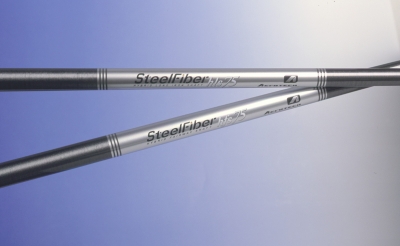 |
Looking back at the history of golf, one would think the shaft was seen as the least important aspect of golf club evolution – from when the game was played with mere sticks all the way through the days when hickory shafts provided the connection between hands and ball. But it seems more and more we’re discovering the critical role the ‘hollow tube’ plays in the way we hit golf shots, and the shaft is much more complex than just something to glue a head on.
“The interaction between the golfer and the shaft will dictate how the head is delivered to the ball,” Hilleary continues. “It is absolutely critical that the shaft and the golfer work together effectively to give the player the best opportunity for success. This means the shaft must perform consistently from swing to swing -- and that it’s got proper stiffness, both torsionally and longitudinally for that particular player. If you’re playing with an improperly fitted shaft, it will most certainly cost you distance or accuracy or both.”
Such is the way of golf in the 21st century. The balls get hotter, the titanium club faces get thinner and the driver heads have fattened up to their maximum legal limits. And the shafts are there to bring them all together.
Aerotech Sports is relatively new to the golf business, but that hasn’t stopped the Bellingham, Washington based company from becoming an innovator in the industry. Hilleary said the company started by producing hockey sticks in 1991 – the first manufacturer to produce an NHL approved composite stick. Then Aerotech started making golf shafts in 1994, because there were some avid golfers in the group who believed there was a crossover in technology between one type of ‘stick’ to the other.
 |
“Understanding composites and how to achieve varying flexural properties that produce a quality durable structure is critical to both hockey sticks and golf shafts. From there, it comes down to understanding what effects performance in each category and creating new innovative designs that advance the performance of each,” Hilleary said.
‘He shoots, he scores!’ Maybe self-described hockey nut Happy Gilmore knew more about taking his hockey game to golf than we really gave him credit for.
Though it’s definitely not as evident when looking through the golf shop, there are probably as many shaft manufacturers as there are ball producers – and it’s certainly not at all clear from just seeing a golf shaft why one would be better for you than another.
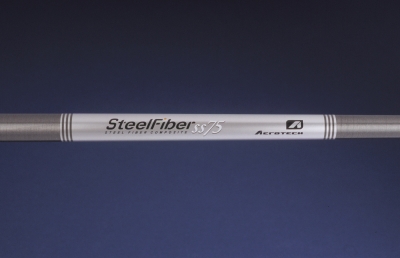 |
Hilleary explains what makes Aerotech different: “Our shafts are produced using a proprietary computer controlled ‘Spun Graphite’ technique and a finishing process that maintains the integrity of the surface fibers. This creates a seamless structure that is far more uniform and consistent than anything else on the market.”
“Next, we produce a SteelFiber shaft that’s constructed with a graphite core and a SteelFiber surface layer that provides the shaft performance benefits of both materials. It has the control and consistency of a steel shaft, yet is lighter weight and adds the vibration dampening characteristics of an all-graphite shaft,” Hilleary explained.
Aerotech also produces a super-lightweight, all-graphite shaft called ‘Powercoil’ which incorporates a surface layer of graphite oriented in the hoop direction – making the shaft more stable during the golf swing.
All of these benefits you won’t possibly realize unless you’re fitted for a shaft. Fitting for clubs depends on several factors, including your height, length of your arms, size of your hands, lie angles, etc… For proper fitting for golf shafts, however, you’re going to need more than just a tape measure.
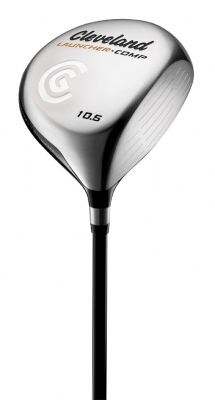 |
“It’s best to see a quality club fitter who can put you on a launch monitor and measure your launch conditions (i.e. swing speed, ball speed, spin rates, launch angle). With this data, he can recommend what shaft and flex you should be using. A properly fitted shaft allows a player to load the shaft up, both torsionally and longitudinally, and have it return to square at impact with adequate club speed,” Hilleary recommended.
For our review purposes, we needed a driver head that would work well with Hilleary’s Aerotech shaft creations, and he recommended the Cleveland Launcher 460 Comp Driver. We’d heard quite a lot about the Cleveland driver, and seeing Vijay Singh continually use it to launch golf balls into space has certainly given the company a lot of ‘face’ time this year.
The club also received great reviews in this year’s Golf Magazine Equipment tests.
 |
So we were curious, and open to looking at the Cleveland head along with the Aerotech shaft. The first thing we wanted to find out was how the Comp was different than the earlier Launcher model. Mark Christensen, Senior Marketing Product Manager for Cleveland Golf, supplies the answers: “Because of its construction, the Launcher 460 Comp produces a higher launch and less backspin than the original 460, which results in a more piercing ball-flight than the older club, providing added carry distance. For slower swing players who need spin to keep the ball in the air, the Comp allows them to move higher in the face loft (i.e. from 9.5 to 10.5 degrees) – which gives them more forgiveness and straighter shots without affecting their ball-flight.”
Scientifically speaking, the Launcher 460 Comp is made with an ultra-lightweight tri-ply carbon fiber composite crown. This feather light section allows for the redistribution of 25 grams of weight to lower and deeper locations around the club head perimeter – which in turn lowers the center-of-gravity and moves it back towards the edges of the club, resulting in higher launch conditions with less spin.
Presto! A club that’s engineered to make your ball fly farther and straighter.
Every manufacturer employs advanced computer technology to perfect weight distribution within the club head, yet there’s no doubt that not every driver is created equal. Christenson explains why Cleveland’s Launcher is different: “Though there are many composite drivers available today, the Launcher Comp features an award winning 460cc head shape which is currently the largest and best looking multi-material driver available on the market.”
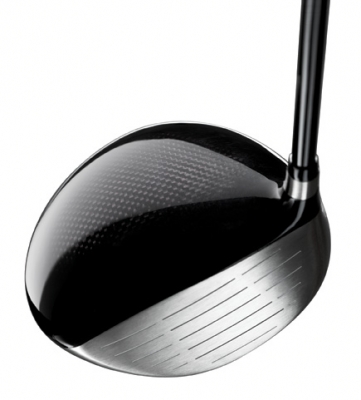 |
He continues, “Additionally, Cleveland Golf’s engineers have analyzed and optimized the impact sound to be hotter than regular titanium, and more solid than previous multi-material drivers. Beyond its tremendous performance characteristics, we firmly believe it’s the best sounding multi-material driver on the market, which is a very important consideration among customers when choosing a driver.”
Christenson also mentioned that Cleveland was the first major equipment manufacturer to move to the 460cc USGA legal size limit for drivers. The bigger the size, the deeper the clubface and hence the most forgiveness on off-center hits – that’s the concept. But it also seems to be more than just forgiveness these days, as even the top ranked players in the world have adopted the biggest driver heads.
For his part, Hilleary says Aerotech’s shafts are designed to handle the added stress that the larger headed drivers produce – but it again comes down to proper fitting. Christenson also emphasized the importance of fitting when choosing a driver, and added Cleveland Golf has introduced a half dozen Techvans that travel from region to region custom fitting consumers at demo days nationwide.
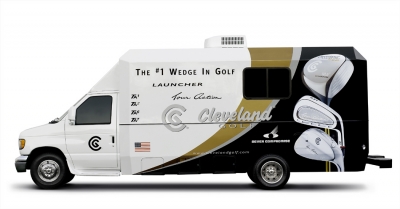 |
There’s your chance to be hooked up to the machines and get the same advantages the pros enjoy in assessing their swing characteristics – and allows you to get the best combination of head and shaft for your unique swing. And if Hilleary is right, then that just might be an Aerotech shaft.
For us, we found the Aerotech/Cleveland driver very easy to hit. It’s extremely light – probably lighter in feel than other drivers we’ve demoed. Because of the large head, we’d certainly recommend several practice sessions to develop a comfort level with it – as it’s difficult to square the club in the beginning (might be a mental issue!).
Since we didn’t scientifically test it, we won’t delve into whether it’s longer or straighter than others we’ve tried – and we have only our opinions to go by. But we’d certainly put it on the list to place in your local club pro’s cart to check out on the range. And if you’re going to invest the sizeable amount of cash to get a driver of this type, do the work in properly selecting it.
One thing’s for sure, you’ll need a science degree to understand some of the terminology, but it doesn’t take a brain surgeon to understand a long drive down the middle of the fairway. Try out the Aerotech shaft and the Cleveland 460 Launcher Comp head, and you just might find that golf’s easier to comprehend than you think.
Details:
For further information on Aerotech and Cleveland products, we suggest their websites:
Aerotech Sports: http://www.aerotechsports.com/
| Related Links | Comments on this article? | |
|
Maryland National Golf Club Hollow Creek Golf Club Rocky Gap Resort PB Dye Golf Club in Ijamsville Whiskey Creek Golf Club |
E-mail Jeff Rendall, Editor: jrendall@golftheunitedstates.com |












